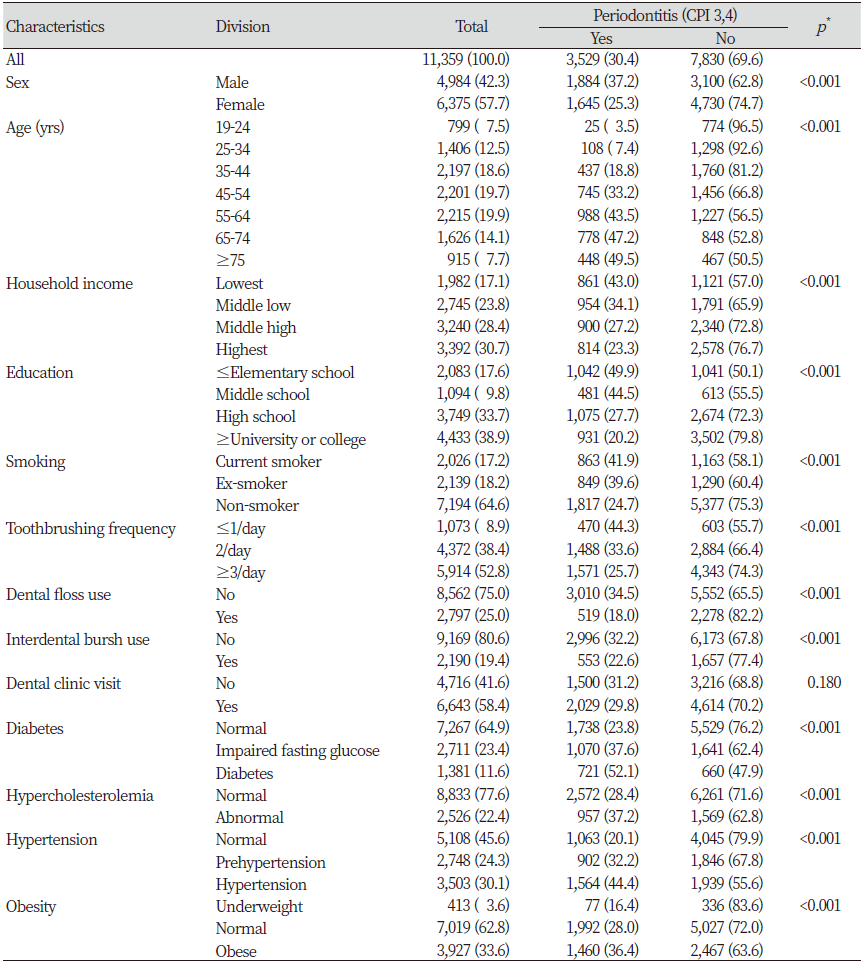Abstract
Objectives: We sought to evaluate the mitigating effect of using floss and interdental brushes on periodontal health inequality. Methods: This study was based on data acquired from the Seventh Korea National Health and Nutrition Examination Survey (KNHANES VII; 2016–2018). We included 11,359 participants aged ≥19 years in the final analysis. Multivariable logistic regression analysis was performed using socioeconomic characteristics, health behavior, health status, and periodontitis status. We analyzed differences in the prevalence of periodontitis according to household income stratified by the use of floss and interdental brush. Results: In the multivariable logistic regression model, the lowest income group had 1.304 (95% confidence interval [CI] 1.08-1.58) odds ratios for periodontitis than the highest income group. In the interdental brush nonusers or floss nonusers, the lowest income group had significantly higher odds of developing periodontitis. However, we found no significant differences in the periodontitis prevalence between the income groups among the interdental brush users. In the 65-year-old or older group, the same result was observed in the interdental brush and floss users. Conclusions: The results suggest that the use of floss and interdental brushes could alleviate periodontal health inequality.
Figures & Tables



